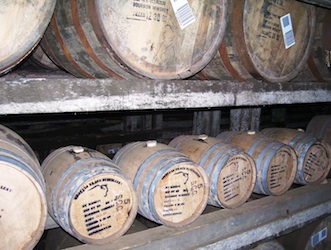The experiments with 5,10 and 15 gallon (22.7ltr, 45.4ltr, 68.2ltr) barrels, which began in 2006, were described by the Kentucky-based company as “failures” that would not be released.
The company said the whiskey aged quickly, displaying the depth of colour and smokiness desired, but the resultant wood sugars were less plentiful than expected, even when compared with the levels normally produced by a typical barrel (53 gallons / 241.9ltr), where there is less wood contact.
Harlen Wheatley, master distiller at Buffalo Trace Distillery said: “As expected, the smaller 5 gallon barrel aged bourbon faster than the 15 gallon version. However, it’s as if they all bypassed a step in the aging process and just never gained that depth of flavour that we expect from our bourbons.
“Even though these small barrels did not meet our expectations, we feel it’s important to explore and understand the differences between the use of various barrel sizes.”
“Instead of just sweeping this experiment under the rug and not talking about it, we felt it was important to share what we learned, especially in light of the debate about usage of small barrels.”
The small-batch bourbons were just some of 1,500-plus experimental barrels aging in the warehouses of Buffalo Trace Distillery.




